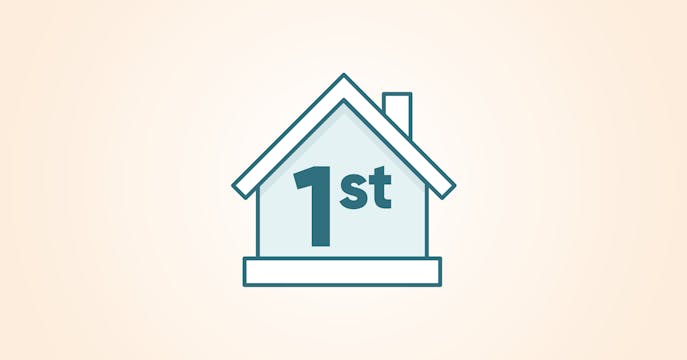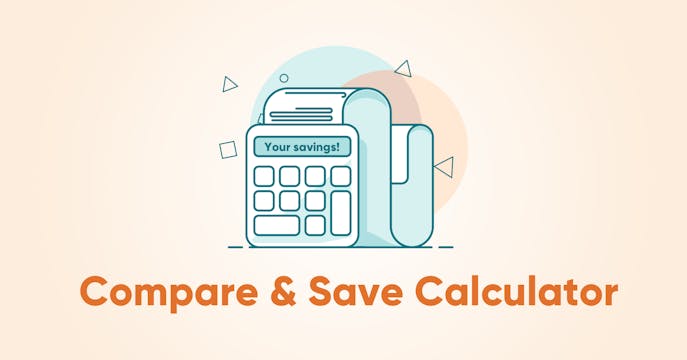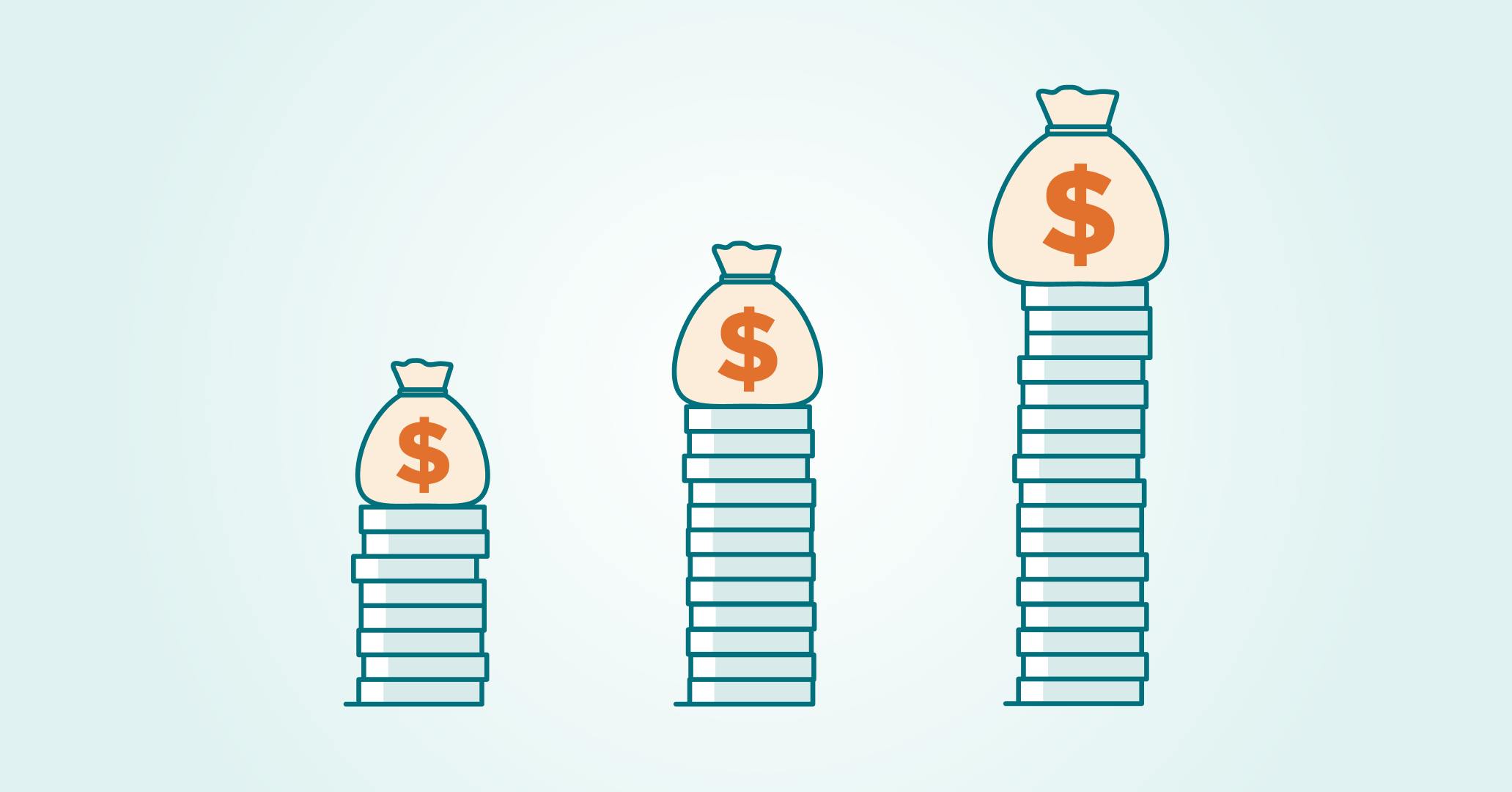An uninsured mortgage is referred to as a 'conventional' mortgage. An insured mortgage is considered a 'high ratio' or 'CMHC' mortgage (named for the government insurer, Canadian Mortgage and Housing Corporation, which provides for a majority of insured mortgages).
Curious about other mortgage terms? Browse through our Mortgage Glossary.
Why a bigger down payment can result in a higher rate.
With a down payment of 20% or more, your mortgage falls into a higher rate category.
But don't despair. You'll still save (mortgage) money over the long term. Here's how your down payment and interest rate are intertwined.
The (rate) opposite of what you were expecting?
You've saved and saved, and have 20% or more of the home purchase price for your down payment.
You're probably thinking that as a good saver, you should be rewarded with a lower rate. That sure sounds right, but it doesn't quite work that way.
Your larger down payment puts your mortgage into the 'conventional' category, which doesn't require default insurance (and you won't need to pay the insurance premium).
But your 'uninsured' mortgage actually costs a bank more, and therein lies the rate snag.
Why are conventional mortgage rates higher than insured rates?
By federal regulation, the big banks in Canada need to hold a certain amount of capital for every mortgage loan. The smaller your down payment, the more capital they hold to protect their bottom line.
This detail brings us to the insurability of your mortgage.
Insured Mortgage Rates
If your down payment is less than 20% (for a loan-to-value (LTV) of 80% or greater), your mortgage is legally required (by OSFI) to carry default insurance.
The insurance protects the bank when they lend a high-ratio loan because the smaller down payment means less equity in the home and more default risk for the bank.
An insured mortgage is fully backed by the Canadian government and paid out to the bank (by one of three insurance providers) in the event of foreclosure and loss (the borrower is still liable for the loan).
Because banks don't need to hold as much capital for an insured mortgage — they are able to offer lower insured mortgage interest rates.
Uninsured Mortgage Rates
For conventional mortgages (20% or more down payment), there is typically no insurance coverage, and banks have to account for the default risk in their portfolio and bottom lines.
Banks charge higher conventional mortgage rates to offset their extra capital requirement and risk exposure.
Is it worth providing a smaller down payment in order to get that lower insured rate?
| Insured Rate – 4.79% | Uninsured Rate – 5.19% | |
|---|---|---|
| Down payment | $99,950 (19.99%) | $100,000 (20%) |
| Required Insurance Premium | $11,201 | $0 |
| Mortgage Balance | $411,251 | $400,000 |
| Mortgage Payment | $2,342 | $2,369 |
| Interest Paid (5 Years) | $92,100 | $97,270 |
| Mortgage Balance After 5 Years | $362,774 | $355,077 |
| With a 20% down payment, despite a higher conventional rate, your mortgage balance would be over $7,700 less than if you put 19.99% down and had a lower insured rate. |
Despite a higher uninsured rate, you'll likely save more in the long run.
Did you notice in the table above? Tipping over from 19.99% down payment (insured mortgage) to 20% (uninsured mortgage) demonstrates how you'll pay down your mortgage faster — with roughly the same monthly mortgage payment.
So, even though your larger down payment comes with a higher rate:
- You don't need to pay mortgage insurance premiums (typically rolled into your mortgage amount)
- With more equity in your home, you'll have access to more options, such as amortization length and access to extra funds (like through a HELOC)
- Your mortgage loan balance will be lower at the outset, costing you less interest over time
- Your balance will be lower after your term, eventually helping you pay off your mortgage faster
- Access to insured mortgage rates is easily lost through a refinance or when moving homes
Only have a smaller down payment? You'll still get some good perks.
If you can't or (don't want to) save a full 20% down by the time you buy a home (especially as a first-time buyer), or your local home prices are generally higher — an insured mortgage can still:
- Get you into homeownership sooner and your foot in the real estate door
- Offer you a lower rate, which helps to offset the default insurance premium you're required to pay
- You'll keep your insured-rate benefit if you continue to pay off your mortgage with no significant changes, like a refinance or extended amortization
- If you switch lenders at renewal for a better deal, you won't need to qualify at the stress-test rate (required for conventional mortgage switches)
Make sure to get your best rate — with us.
The actual rate you get can depend on many factors, such as your down payment size, credit score, income source, home location, purchase price, and amortization.
Our friendly, expert brokers can run the numbers for you, shopping several banks and MFC (Mortgage Finance Corporation) lenders on your behalf. Plus, we pass along a volume rate discount for your best conventional or insured mortgage rate.
We're here to help, anywhere you are in Canada. Get unbiased advice from salaried mortgage brokers who go the extra mile to save you (mortgage) cash — online, over the phone, or in-store.
Easily get your best rate.
Here's some helpful mortgage info

Proof that our rates are lower.
Our rates are 0.18% lower on average compared to everyone else. Prove it? Okay!
Learn More
First Time Home Buyers
Get the best start and save a pile of cash with our mortgage experts.
Learn More
Compare & Save Calculator
See for yourself how much you can save with our lower rates.
Learn More
